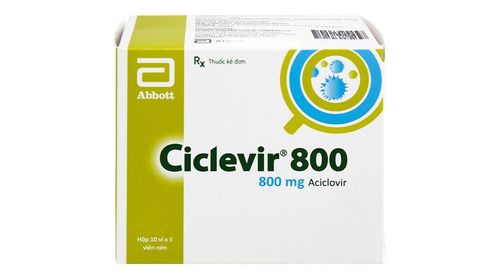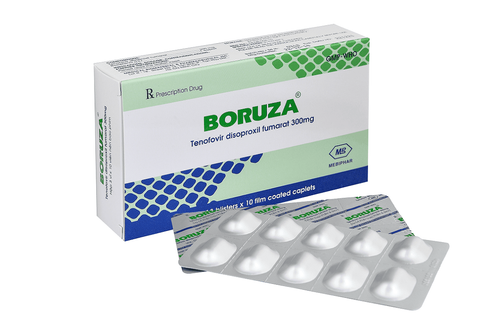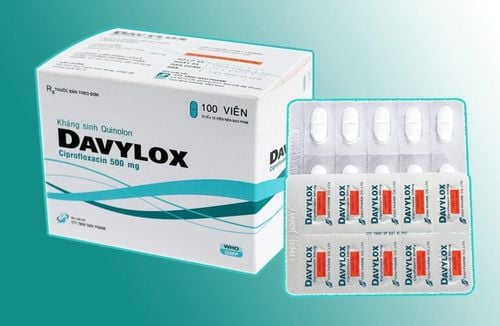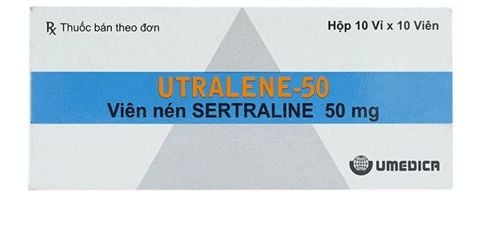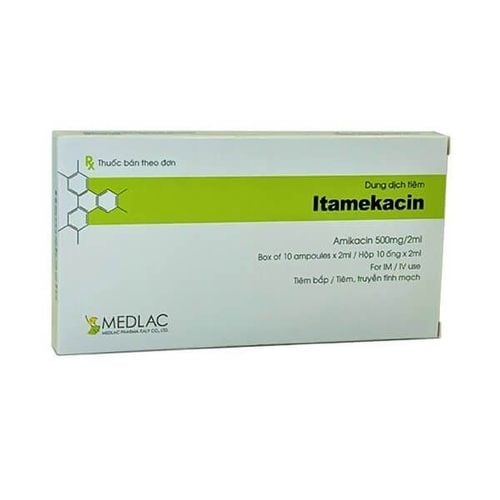This is an automatically translated article.
Midakacin is a drug belonging to the group of antiparasitic, anti-infective, antifungal, antiviral drugs. The drug is often used in the treatment of diseases such as respiratory tract infections, abdominal infections,... The following article provides detailed information about the drug Midakacin, please read it for reference.
1. What is Midakacin?
Midakacin is a drug belonging to the group of anti-parasitic, anti-infective, anti-fungal, anti-viral drugs. Midakacin medicine has the main ingredient Amikacin in the form of Amikacin sulfate 500mg, the drug is made in the form of powder for injection, the content is 500mg per vial, 1 box has 10 vials. Amikacin is a semi-synthetic antibiotic belonging to the Aminoglycoside family. Amikacin has a bactericidal effect because it inhibits the protein synthesis of bacterial cells, the bactericidal effect of the drug remains even when the drug concentration in the blood has decreased to the minimum inhibitory level. Amikacin has high activity against gram-negative aerobic bacteria strains such as Pseudomonas sp., Escherichia Coli, Klebsiella sp., Enterobacter sp.,... The drug has no effect on anaerobic bacteria strains and in the environment. acid or low oxygen. The effect of the drug is not high against gram-positive bacteria such as streptococcus, pneumococcus,... Midakacin reaches maximum plasma concentration after 45 minutes to 2 hours when injected intramuscularly, if intravenous infusion the maximum concentration is achieved immediately after transmission. After entering the blood, Midakacin drug can enter many organ tissues such as bone, heart, lung tissue, gall bladder,... usually 2 to 3 hours, in people with severe kidney failure this can be 30 to 86 hours. For infants about 7 days old and born at full term, the half-life is 4 to 5 hours, for infants 1 to 3 days old this is about 7-8 hours.2. What does Midakacin do?
Midakacin has good effects when combined with penicillin group of antibiotics, often used in the treatment of the following diseases:
Short-term treatment of severe infections caused by susceptible strains of gram-negative bacteria drug-induced sensitivity. In combination with other antibiotics for the treatment of severe intra-abdominal infections, including peritonitis caused by gram-negative bacteria. Treatment of meningitis when combined with Ampicillin or 3rd generation Cephalosporin. In combination with Piperacillin in the treatment of systemic infections caused by P. aeruginosa. In the case of endocarditis caused by S.faecalis or Streptococcus, use Midakacin in combination with Ampicillin or Benzylpenicillin. In some cases, the treatment of anaerobic bacteria requires a combination of Midakacin with metronidazole or another drug to treat anaerobic bacteria. Cases of sepsis include neonates. Severe infections of the respiratory system, central nervous system, bones, joints, skin and soft tissues. Treatment of infections caused by burns or after surgery. In case of recurrent urinary tract infections.
3. Dosage - how to take Midakacin
How to use: Midakacin is used in the form of intramuscular injection or intravenous infusion, only qualified medical personnel can perform infusion operations, you are not allowed to use the drug yourself:
Intramuscular: Mix 500mg Midakacin with 2-4ml of distilled water for injection. The patient is then injected intramuscularly. Intravenous infusion: Dissolve 500mg of Midakacin into 100-200ml of commonly used infusion solution such as Sodium chloride 0.9% or Dextrose 5%. At appropriate doses, Midakacin should be infused over 30-60 minutes for adults. For young children, the volume of infusion depends on the needs of the patient, but the volume should be enough to infuse in 1-2 hours for young children and 30-60 minutes for older children. Dosage: Dosage of Midakacin must be according to the doctor's prescription, you can refer to the manufacturer's recommended dose below:
For adults and children over 12 years old: In people with kidney function Normally, a dose of 15mg/kg body weight/day can be used, taken orally once a day or divided into 2 divided doses 12 hours apart. The total daily dose should not exceed 1.5g. For children from 4 weeks old to 12 years old: 15 - 20mg/kg body weight/day. Can be taken once a day or divided into 2 doses 1 hour apart. For term neonates: The initial dose is 10 mg/kg body weight, followed by 7.5 mg/kg body weight every 12 hours. For preterm neonates: Initiate at 7.5 mg/kg body weight every 12 hours. In case of endocarditis or fever, leukopenia should be administered twice a day. In patients with renal impairment: The starting dose is 7.5 mg/kg body weight. The time for the next dose is calculated based on the creatinine clearance (mg/100ml). Time between 2 doses = 9 x Creatinine clearance.
4. Contraindications to Midakacin
Contraindications to Midakacin should not be used in the following cases:
People with a history of allergy or hypersensitivity to any component of the drug Midakacin or to other Aminoglycosides. People with myasthenia gravis.
5. Undesirable effects when taking Midakacin
During the use of Midakacin, you may experience adverse symptoms such as:
On the kidneys - urinary: The most common is proteinuria, increased creatinine and increased blood urea. More rarely, urinary incontinence, erythrocytosis, leukocytosis or acute renal failure may occur. Renal dysfunction is reversible upon discontinuation of the drug. These adverse symptoms are detected when you do blood and urine tests, so you need to monitor your urine output for 24 hours a day while taking this medicine and go to a medical facility if you need to be checked. found anomalies. On hearing: The drug often reduces the ability to hear and is toxic to the vestibular system, so it causes nausea and dizziness. Long-term use of high-dose drugs can cause deafness and loss of balance, so if you have to take long-term treatment with Midakacin, you need to pay attention to these abnormalities and notify your doctor as soon as possible to have a solution. appropriate decision. You may experience symptoms of a bacterial or parasitic infection due to a superinfection by resistant bacteria, which is uncommon, but you need to take precautions by keeping the place you live and work clean. Avoid contact with a polluted environment that is a breeding ground for bacteria to grow. Gastrointestinal symptoms such as vomiting, nausea, ... are uncommon. On the skin and subcutaneous tissues: Rarely rash and very rarely pruritus or urticaria. You may also experience other symptoms with a rare frequency such as: Anemia, hypotension, muscle aches, pain and muscle twitching, headache, retinal bleeding or blindness, ringing in the ears, fever. , stop breathing or bronchospasm,... When you have these symptoms, tell your doctor for the earliest treatment. Midakacin is nephrotoxic, 8th nerve and has neuromuscular blockade, toxicities have been observed in patients with renal failure, when combined with other drugs that are nephrotoxic or in cases of renal failure. long-term and high-dose drug use. If you experience any unwanted effects during the use of Midakacin, you should notify your doctor for early and timely treatment.
6. Notes when using Midakacin
When taking Midakacin, you should note the following points:
You need to tell your doctor about the drugs you are using or the medical conditions you are suffering from because Midakacin may have a bad interaction with the drug. and aggravate your condition. Especially kidney failure, hearing loss, vestibular disorders, muscle weakness, ... and toxic drugs on kidney, 8th nerve or muscle such as Bacitracin, Cisplatin, vancomycin, etc. ... You need to be fully hydrated during treatment with Midakacin by drinking enough water or if you can't replenish yourself through food, please tell your doctor for advice on other ways. If you have to take medicine for 7 to 10 days, you need to have your audiogram and kidney function checked before and during treatment. You need to coordinate with your doctor to monitor your health closely, to ensure it is as safe as possible. For infants and young children, it is necessary to strictly follow the doctor's instructions because the kidney function in the child is not yet complete, you are not allowed to arbitrarily use the medicine for your baby. Midakacin has the ability to cross the placenta and has not been determined to be safe for pregnant women and the development of the fetus, the drug has the potential to cause myasthenia gravis or danger to the fetus, so if you are pregnant or If you are pregnant, you need to talk to your doctor so that you can choose the right medicine and use it for you. It is not known if Midakacin can pass into breast milk, but it is not recommended to use Midakacin while breastfeeding, so you need to stop breastfeeding while using Midakacin, talk to your doctor for advice on the precautions. taking the drug during this period as well as when it is possible to breastfeed again after stopping the drug. Midakacin has the potential to cause dizziness, so do not use it when you have to drive or operate machinery. If you are in this group, you should notify your doctor for advice or choose a more suitable drug for you. Above is detailed information about Midakacin medicine, if you still have unclear questions about the drug, you can contact your pharmacist or doctor to get those questions answered.





